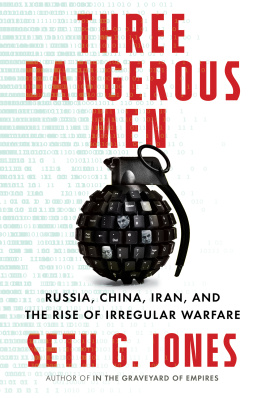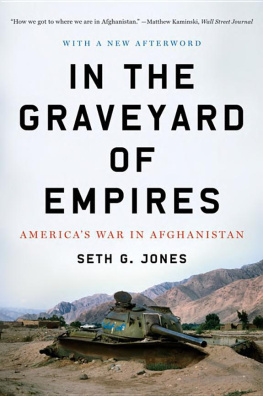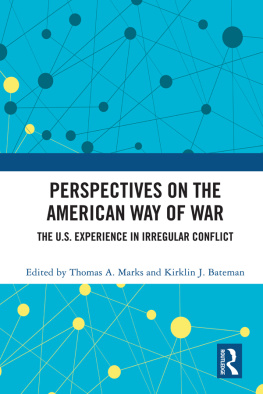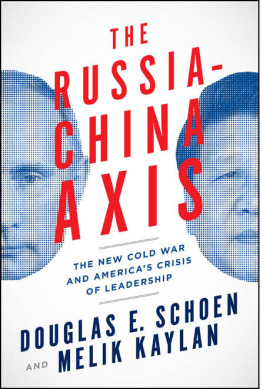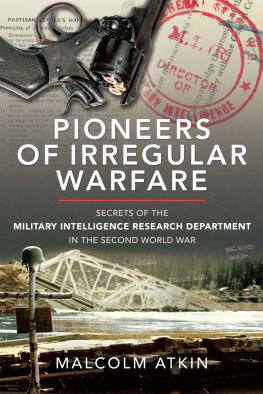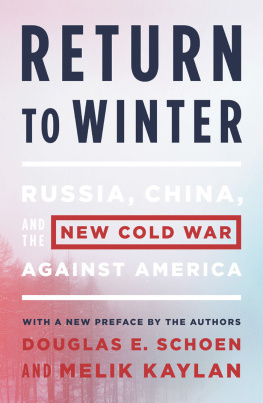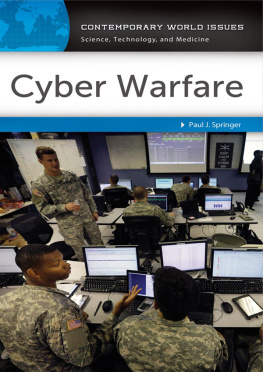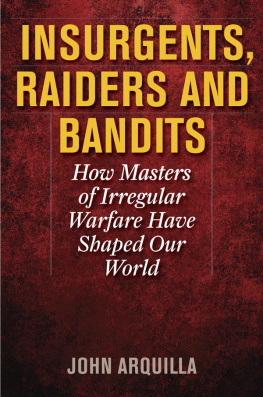Contents
Guide

ALSO BY SETH G. JONES
A COVERT ACTION
WAGING INSURGENT WARFARE
HUNTING IN THE SHADOWS
IN THE GRAVEYARD OF EMPIRES
HOW TERRORIST GROUPS END
THE RISE OF EUROPEAN SECURITY COOPERATION
THREE DANGEROUS MEN
RUSSIA, CHINA, IRAN, AND THE RISE OF IRREGULAR WARFARE
SETH G. JONES

Copyright 2021 by Seth G. Jones
All rights reserved
First Edition
For information about permission to reproduce selections from this book, write to Permissions, W. W. Norton & Company, Inc., 500 Fifth Avenue, New York, NY 10110
For information about special discounts for bulk purchases, please contact W. W. Norton Special Sales at or 800-233-4830
Book design by Lovedog Studio
Production manager: Lauren Abbate
Library of Congress Cataloging-in-Publication Data is available
ISBN 978-1-324-00620-6
ISBN 978-1-324-00621-3 (e-book)
W. W. Norton & Company, Inc., 500 Fifth Avenue, New York, N.Y. 10110
www.wwnorton.com
W. W. Norton & Company Ltd., 15 Carlisle Street, London W1D 3BS
Asymmetric actions have come into widespread use, enabling the nullification of an enemys advantages in armed conflict.
Valery Gerasimov,
[The value of science is in the foresight]
CONTENTS
THREE DANGEROUS MEN
I N MID -M ARCH 2020, CELL PHONES ACROSS THE United States lit up with alarming news. Citing a source in the US Department of Homeland Security, a series of apocalyptic texts warned that the Trump administration was deploying armed US soldiers onto the streets to enforce a lockdown in response to COVID-19. They will announce this as soon as they have troops in place to help prevent looters and rioters, said one text. The anonymous sender noted that his friend got the call last night and was told to pack and be prepared for the call today with his dispatch orders. It then implored people to forward the text to family and friends.
Back in Washington, the White House reacted quickly. Text message rumors of a national #quarantine are FAKE, the National Security Council said in a tweet on March 15, just before midnight. There is no national lockdown. But it did little to stem the panic of some recipients, who frantically called their friends and family. As the US government explained, the texts were part of a disinformation campaign intended to sow disorder and confusion during the early stages of the COVID-19 crisis.
But who sent them? US intelligence agencies ultimately concluded that Chinese government operatives had forwarded texts to Americans on their cell phones and posted false information on social media platforms. Several US intelligence analysts I spoke to did not believe that Chinese agents had created the lockdown texts, but rather amplified existing texts. The messages were tailored to alarm people and drive recipients to share and spread the misinformation on their Twitter and Facebook feeds. China was weaponizing information by sending texts to cell phones on US soil.
For decades, Russia had conducted disinformation campaigns in the United States. The Soviets were famous for their propaganda. So were the Chinesethough largely outside the United States. Beginning in the 1940s, for example, China orchestrated a relentless propaganda and intelligence campaign against Taiwan. But China had never been this aggressive with operations targeting Americans in the US homeland. US officials were alarmed at how quickly China ramped up pro-Beijing and anti-Washington propaganda on social media platforms. The Chinese have always had the capability to collect information, conduct espionage, and conduct a range of other activities against the United States, a former US intelligence agency leader told me. But the Chinese have gone a step farther in conducting disinformation in the United States. And it is decidedly unneighborly.
Even after American officials had discovered the source of the misinformation, Chinese government officials continued to pile on. Zhao Lijian, a Chinese spokesman for the Ministry of Foreign Affairs, wrote on Twitter in March that the US military might have spread COVID-19 in the Chinese city of Wuhan. It might be US army who brought the epidemic to Wuhan, he wrote. Be transparent! Make public your data! US owe us an explanation!
Russian and Iranian government outlets soon joined the fray, aggressively promoting conspiracy theories that COVID-19 was a US-manufactured biological weapon targeting their countries. A news outlet funded by the Russian Ministry of Defense published an article titled Coronavirus: American Biological Warfare against Russia and China.
None of these claims were true, of course. But Chinese, Russian, and Iranian activity during the COVID-19 pandemic highlighted some of the major foreign policy instruments that those countries used to compete with the United States. Cyber campaigns, covert action, support to state and nonstate proxies, information and disinformation, espionage, and economic coercionthese are the tools of irregular warfare .
* * * *
W HILE CONVENTIONAL WARFARE clashes between large military forcesdefined twentieth-century power, irregular warfare will increasingly define international politics in the coming decades. Rising powers see an urgent need to globally compete for power and influence, and they are aggressively waging irregular warfare. Though the United States led the world after the Cold War as the only remaining superpower, supported by strong allies and a network of trading partners, the country is woefully unprepared for this type of competition today.
US government agencies and departments are focusing too much on planning for conventional and nuclear war with China, Russia, and other adversaries. Some policy makers are fixated on building a bigger navy with more than 350 ships, spending over $1 trillion on nuclear modernization, expanding the number of active duty and reserve soldiers to more than 1,040,000, andperhaps most importantfighting conventional and nuclear wars against Russia in the Baltic states and China in the Taiwan Strait and South China Sea. And they are giving too little attention to irregular warfare. Yet China, Russia, and Iran are dailyeven hourlytargeting the United States at home and abroad, using irregular means. Their main tools are not fighter jets, battle tanks, or infantry soldiers, but hackers, spies, special operations forces, and private military companies with clandestine links to state security agencies. They are waging a war online and in the shadowsnot primarily on conventional battlefields.
The United States does not need to choose between conventional and irregular competition. Both are important. Russia and China are developing conventional and nuclear military capabilities that pose a threat to the United States and its partners. The challenge is to find an equilibrium. As former secretary of defense Robert Gates said to me: You have to be prepared for the full range of contingencies. One of the reasons that the Cold War, in many respects, was fought using nonmilitary instruments was because of the power of our conventional and nuclear forces to deter the Soviets. But while the United States fought effective irregular campaigns during the global competition with the Soviet Union, today it has ceded that battlefield to others. The results are disturbing.
US adversaries have exploited polarization in American politics; taken advantage of a withdrawal of US forces from the Middle East, Africa, and South Asia; and targeted US universities, companies, and government agencies. These trends worsened under President Donald Trump. His hyperpartisan politics, isolationist tendencies, and disregard for allies made it easier for China, Russia, and Iran to exploit the United States vulnerabilities and weaknesses at home and abroad. After Trumps refusal to accept the outcome of the November 2020 presidential election and his incitement of a mob that stormed the US Capitol Building on January 6, 2021, Chinese government officials and pundits excoriated the United States for lecturing the world about democracy and human rights. In some countries, the United States unpopularity in the age of Trump was nearly on par with Kim Jong-uns North Korea, a regime run by a despot who butchered and starved his own population.

